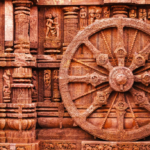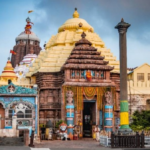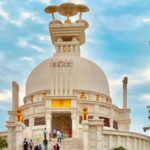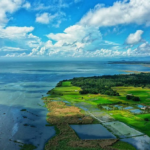The Ganga dynasty constructed the Barabati Fort in the fourteenth century, close to Cuttack, Odisha. With its gate, moat, and earthen mound housing the nine-story castle, the fort’s remnants nevertheless arouse recollections of bygone eras. It is currently located close to the contemporary Barabati Stadium, which hosts a number of sporting and cultural events. Not far from the fort is another temple devoted to the city’s ruling deity, Katak Chandi. There are currently plans to transform the historic Gadakhai into a top-notch park and boating destination for tourists. The gadakhai’s rehabilitation project is well underway.
Situated approximately 8 km from Cuttack’s city, at the apex of a delta created by the river Mahanadi on the north and its distributary, the Kathajodi on the south, this medieval fort is located at 20029’1.32?N 85052’3.36E. Its elevation is 14.62 meters above sea level.
HISTORY
King Nrupa Keshari established Cuttack, also known as Kataka, in 989 AD. In 1006 AD, King Marakata Keshari erected a stone revetment on the left bank of the Kathajodi to shield the city from the destructive power of flooding. Because of its advantageous location, King Anangabhima Dev III moved his capital from Choudwar Kataka to the modern-day Cuttack, which was then called Abhinaba Varanasi Kataka. In 1229 AD, he also constructed the Barabati fort. Several dynasties, including the Keshari, Ganga, Gajapati, and Bhois, have ruled Cuttack. According to conventional history, Somavansi monarch Nrupakesari is credited with building this city. According to the Madalapanji, the fort was constructed in 989 AD.Nonetheless, a number of academics, like the late Professor P. Mukharjee, maintain that Cuttack was created by the Ganga king Anangabhimadeva III, who ruled from 1211 to 1238 AD.
In 1560 AD, Mukundadev Harichandan, the Chalukya King, constructed a nine-story structure within the premises of Barabati Fort. In 1568 AD, this last autonomous Hindu ruler of Odisha perished in battle against Suleiman Karni, the Sultan of Bengal. Two rings of forts on either side of the Mahanadi and the Kathajodi protected Barabati Fort in the fifteenth and sixteenth centuries. The city was taken over by Afghan rulers of Bengal in 1568 AD, then falling into the hands of the Moghul Empire in 1592 and the Marathas in 1751. In 1803, Cuttack and the rest of Odisha were placed under British administration.
In 1919, the Bengal-Nagpur Railways established connections between Cuttack, Madras (Chennai), and Calcutta (Kolkata). In 1936, it was designated as the capital of the newly created state of Odisha, a position it held until 1948, when Bhubaneswar became the new capital. In 1989, the city celebrated its 2,000th year of existence.
In the western section of the city, on the right bank of the Mahanadi, are the remnants of the ancient Barabati Fort. The earthen mound housing the nine-story palace and an arched doorway are all that remain of the Fort. According to archeological surveys, the Fort was approximately rectangular in shape, covering an area of nearly 102 acres (0.41 km2), and had a wall made of laterite and sandstones surrounding it on all sides. There is a tank to the west of the mound. The remnants of a temple can be found on the mound’s northeastern corner. The white sandstone of the temple was built upon a base of laterite stones. Thus far, around four hundred molding bits and a few damaged sculpture pieces have been found. This Ganga-era temple, which housed a stone image of Lord Jagannath, is now in ruins. There is still a mosque that was constructed in 1719 CE by Nawab Murshid Quli Khan, the administrator of Emperor Aurangzeb.
FEW FACTS
- The fort offers breathtaking view of modern day Cuttack city.
- The famous temple of Goddess Katak Chandi is situated near the fort.
- Barabati Stadium, the venue for various sports, events and cultural programmes is situated next to the fort.
















